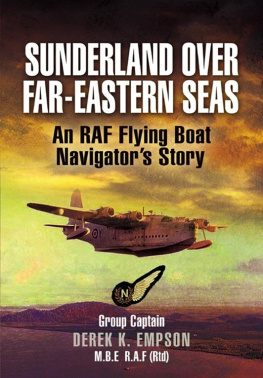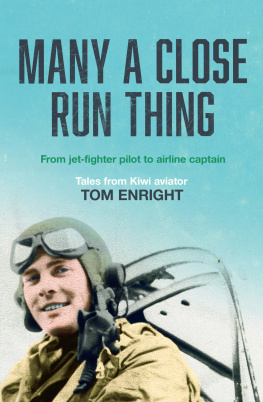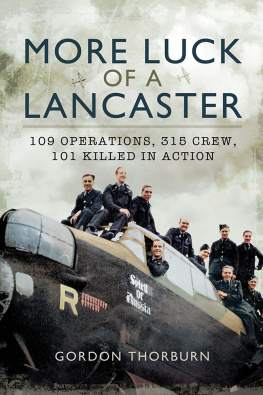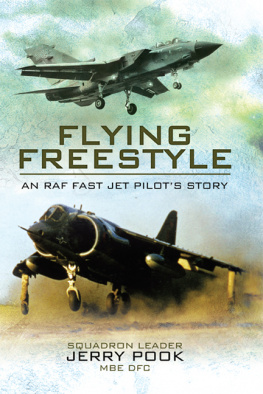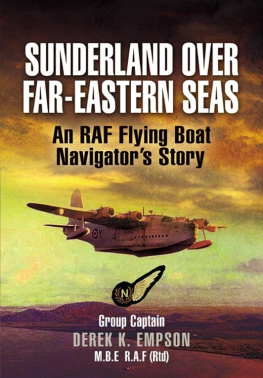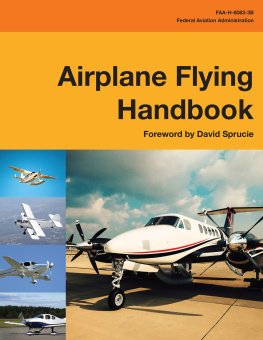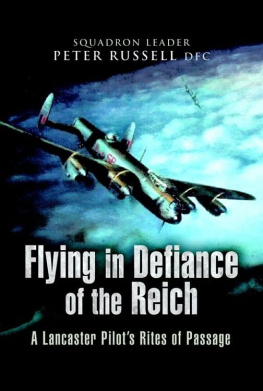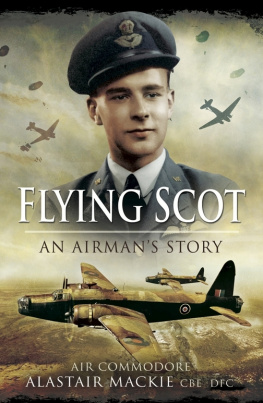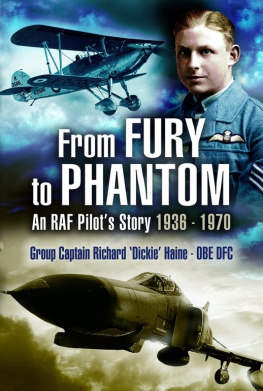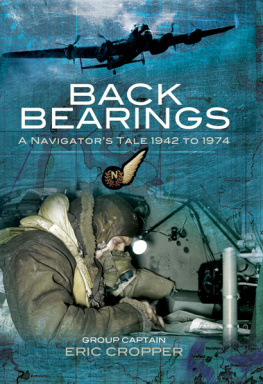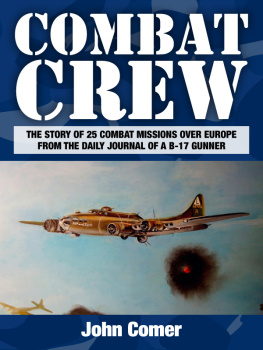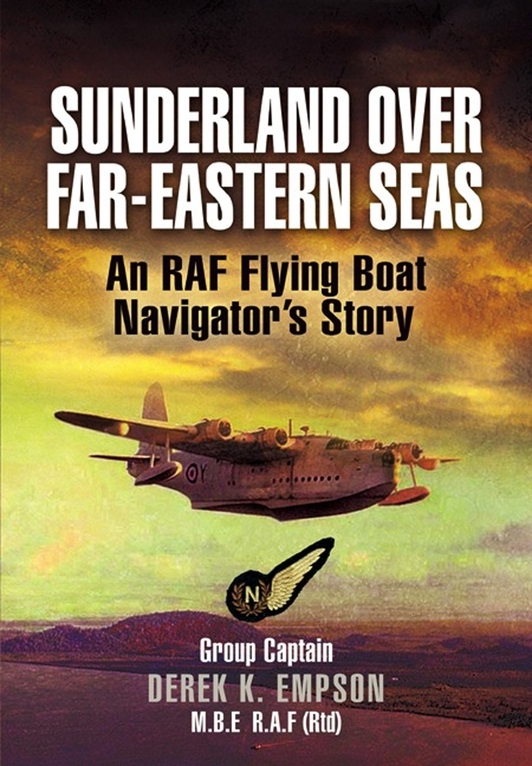Acknowledgements
I offer my sincere thanks to several former Royal Air Force colleagues with whom I flew in Sunderland flying boats during the squadron tour I describe in this book. These include Air Vice-Marshal George Chesworth (who has kindly written the Foreword), David Germain, the late Sandy Innes-Smith (who sadly died on 30 April 2009), John Land and Stuart Holmes, all of whom helped me in various ways. Some confirmed for me their recollection of certain events at which we had both been present; others dug out old photographs. I wish to thank Tony Burt with whom I have often been in contact. We have periodically passed information to each other, and I have greatly valued his assistance. I want also to thank Brian Banks for his description of Song Song Range and Bidan; and Mike Reece for his recollections as an airman at Seletar. I am extremely grateful to David Croft who, over a long period, has gone to enormous lengths to locate and send me photographs taken by members of the RAF Seletar Association and the Butterworth and Penang Association. Many are included here, and wherever possible I have identified the individual photographers. Those whose photographs I have included are Dave Croft, David Germain, John Land, Tony Burt, Bob, the late Derek Lehrle, Jack Gretton, Brian Lavender, Joe Lockhart, the late Bill Whiter, Joe Manny, William Devine, Charles Ayres, Don Jones, Tony Feist, the late Bill Wilson, Sam Mold, Ted Wilkins, Don Jones, Ginge Mills, Graham Horton, the late Peter Giddens, Alan Hills, Mike Rees, Bill Murray, A Carrie, Ron Bevan, Climpson, Boon Swee Low, 47 Air Navigation School, Queenstown South Africa, and others whom I could not identify. I have included a few examples of the work of the excellent cartoonist Kane, who was an engine fitter on Far East Flying Boat Wing. I am similarly grateful for photographs I downloaded from the former 88 Squadron Association website. I apologise sincerely to anyone whose name I have missed. All the above photographs and snippets of information provided or confirmed to me by those whom I have been able to contact have helped to piece together the jigsaw of events that, at this distance in time, it has not been easy to complete. I want to thank the Imperial War Museum, especially Mr Craig Murray, the former Collections officer at Duxford Air Museum, who allowed me to photograph Sunderland ML796. This was a rare privilege to which I hope Appendix 4 does justice. I am also grateful to Ian Alder of the RAF Museum Reserve Collection for access to the 88 Squadron History Book, located there with the help of Tony Burt.
I thank, too, all RAF servicing and Marine Branch personnel at the bases from which we flew, who gave such unstinting support to Sunderland crews, twenty-four hours a day, no matter how hot, cold or wet were the conditions in which they had to work. I also wish to remember the members of staff at the officers messes at Iwakuni, Kai Tak and Seletar, who saw to our every need with such courtesy and good humour. My thanks are also due to certain members of the United States Navy whose names I have quoted in the text. They served aboard the destroyer USS De Haven (DD-727) and contacted me last year to give their recollections and to send photographs of my aircraft following the ditching that our crew had to make in the Tsushima Strait in December 1953. These include Dale Harbin, Hal C. Smith, Jim Bussard, Scott Martin and Lloyd Gasway. USS De Haven came to our assistance, and our crew spent several days on board enjoying the hospitality of Captain Sigmund USN and his crew. I should at the same time like to thank and send greetings to those of the US Navy with whom we worked at Iwakuni as members of the United Nations Force engaged in operations during the Korean War. I include the operations staff and crews of US Navy Mariner and Privateer VP aircraft based at Iwakuni who flew the same missions as we did. I also wish to mention the RAF Unit at Iwakuni and members of the Royal Australian Air Force in whose officers mess my fellow RAF officers and I were made most welcome. I include the RAAF weather forecasters who gave us excellent service, often at ungodly hours of the night.
I especially mention Michael R Haines who kindly contacted me recently. Michael is the son of the late Flight Sergeant R C Haines who, sadly, together with three other crewmen, was killed in the accident to Sunderland PP148 (F) while landing at lwakuni on 25th March 1953, an accident I briefly recount in Chapter 3.
Finally, I thank my wife Margaret for her patience, for the numerous cups of tea, coffee and occasionally something stronger that she set down beside me at regular intervals during the many months I spent in front of my computer while this book was in the making. I hope she and the remainder of my family find something of interest herein just as I hope this book will resurrect fond memories for those who, like me, were fortunate to have flown in boats, or who supported our operations from ashore.
Appendix 1
Statistical Analysis of a Far East Flying Boat Tour
This Appendix contains charts showing the numbers and percentage share of different types of sortie and associated flight hours flown by my particular Far East Sunderland aircraft during my two-and-a-half-year tour. This pattern of flying is likely to be fairly typical of many other Far East Flying Boat Wing crews who served on Nos 88, 205 and 209 Squadrons. Data showing the number of flight hours and sorties, and the bases from which they were flown, may be slightly skewed due to the fact that I flew in crews mostly or totally composed of unmarried aircrew. Understandably, there was a tendency to avoid over-long or undesirably frequent detachments away from Singapore by crews with a high proportion of married men, in order to reduce separation from families who were based at Seletar. Crews such as mine that were made up mostly or entirely of single men didnt object to this operating policy in the least.
During thirty calendar months, I flew 300 Sunderland sorties, amounting to 1,856 flying hours. Of these, 280 sorties and 1,766 hours were with No. 88 Squadron; the remainder were with No. 205 Squadron after 88 disbanded in October 1954. I flew a further 110 hours during twenty-three sorties while at No. 235 OCU RAF Calshot during my conversion training between March and May 1952, bringing my total Sunderland flying hours to 1,966 hours and 323 sorties.
The 1,856 hours flown in the Far East gives an average of sixty-four flight hours per month. This included three months on the Singapore to UK and return ferry flight, between December 1952 and March 1953, when we averaged only thirty-seven hours per month due to unserviceability, bad weather or high sea states that prevented flying. Further analysis shows that I flew more than eighty hours in nine calendar months, more than ninety hours in six months, more than one hundred hours in three months, and more than 120 hours in two months (127 hrs 10 min was the highest monthly total). The majority of months in which flying hours exceeded ninety hours included Korean operations from Iwakuni, Japan. In six quiet months I flew less than thirty hours. These were when I was either on leave (our annual entitlement was six weeks, though I usually took between three and four weeks), when I had no aircraft (January 1954), and when I was for a few weeks medically unfit for flying.

